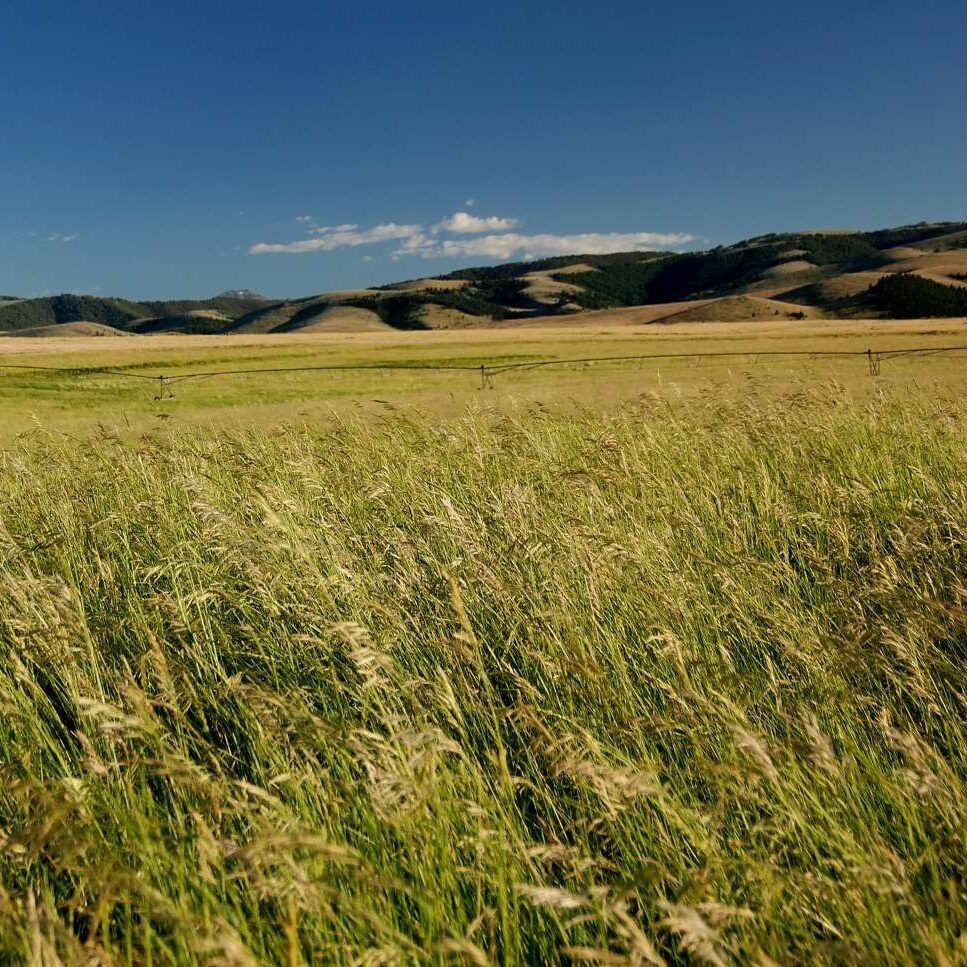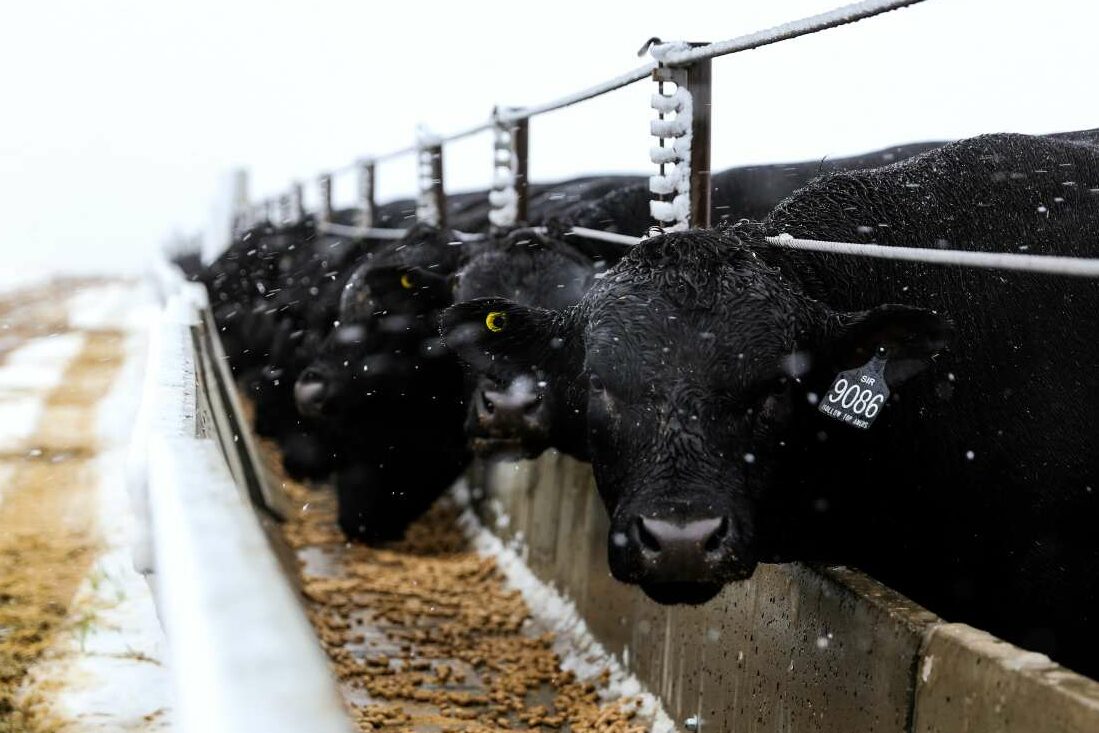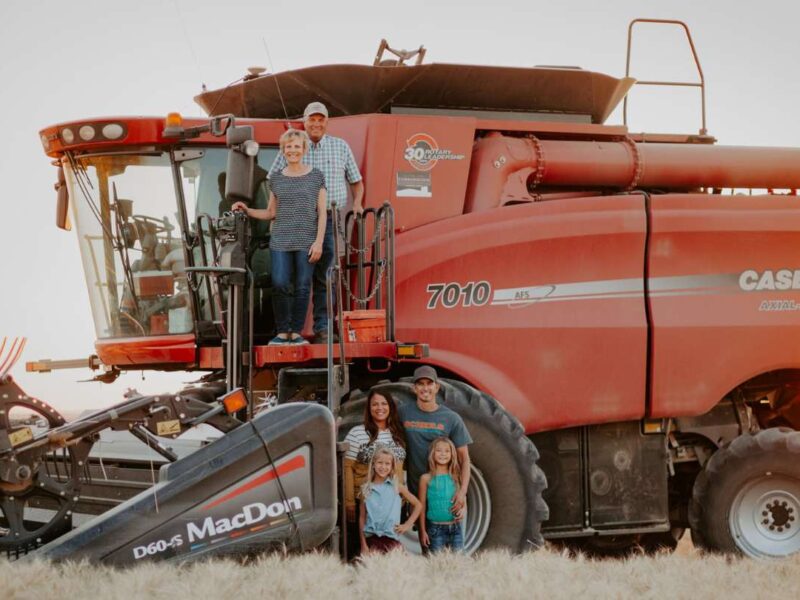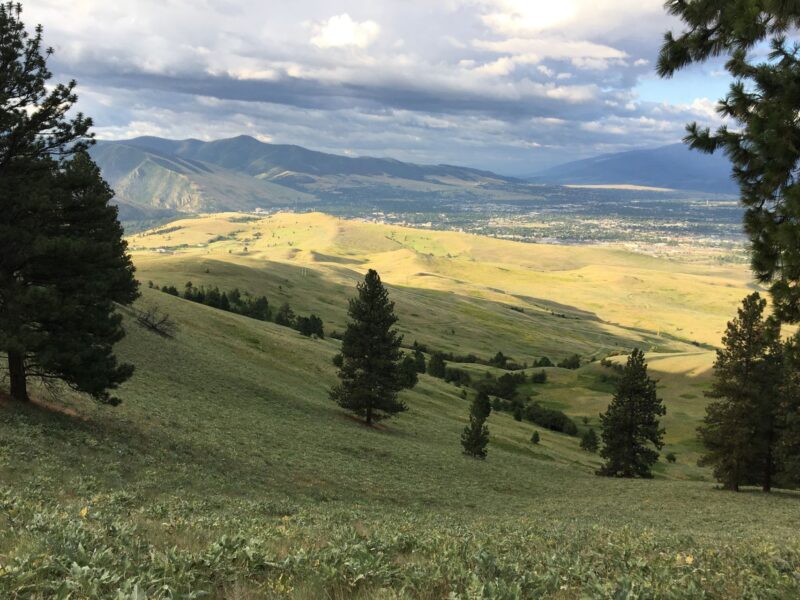Lessons learned the hard way at Montana’s Hollow Top Angus
I got into cattle ranching in 2012, at 60 years old, after a long and successful career as a consultant in the natural gas and oil industries. As a youngster I had heard stories of my great, great-grandfather homesteading a ranch in Colorado, but practically, I had little understanding of what I was in for. My exposure to risk management came from helping my clients assess the risks of drilling, pipeline construction and related decisions, and managing my own business through 25 years of business cycles, employees, partners, and new product development. Many friends and advisors told me I was making a mistake: cattle ranching was a surefire way to lose money, they said. I blithely disregarded their caution. Surely, my business acumen would be largely applicable across industries. So, I set off to prove them wrong. I was ready for the challenge.
My wife and I built the ranch by combining three properties that were once components of a large, historic cattle operation. Combined, they encompass about 8,000 deeded acres of varied topography in southwestern Montana. Our elevation ranges from a little over 5,000 feet at the lowest point to over 8,000 at the highest point. We have about 900 acres of irrigated pasture, which in a good year, with good water and management, will produce all our demand for hay/alfalfa/grain crops in one cutting. In addition, we have about 2,000 acres of leased rangeland contiguous to our ranch that provides summer graze for our heifers and older cows. In an average year we carry about 400 head of bred cows, 150 head of bred heifers and about 500 calves. We sell two-year-old bulls as our primary product, so we also have about 125 one- to two-year-old bull calves (until their sale age each November), a small commercial herd and about 10 herd bulls. The ranch has a combined operating budget north of $1.0 million plus capital expenses.

A Surefire Way to Lose Money
Many ranches are operated with the express expectation that they will have a net loss at the end of the year. We do not believe this makes sense. Our financial goal with the ranch is to make a profit at the end of the year sufficient to cover working capital needs and generate a minimal return on our invested capital. We have other goals, such as improving production and preserving western ranching traditions and culture, that require capital investment as well. We recognize that if real estate appreciation is the only value created and the operation is relegated to a net capital sink, then the enterprise is not sustainable. Without solid risk management, achieving our financial goal is impossible. Thus, assessing risk is of paramount importance.
I will quickly share two examples of what I mean. In 2012, we planted several hundred acres of irrigated land in wheat. About two weeks before harvest, most of it was destroyed by hail. Lesson one: weather is a risk factor that is never absent and can be extreme. Lesson two was multi-faceted and came a couple of years later. We purchased a bull for $25,000 that was a great prospect. We had several of his progeny on the ground and he began proving himself quite nicely – so nicely, in fact, that one of the top bull studs wanted to purchase a half interest and promote him. Before consummating the deal, they wanted him to have certain vaccinations, so we ran him through the chute where he received his shots. On the way out of the chute he smashed his shoulder into one of the front posts and suffered a serious bruise. Our manager at the time did not know much about treating this type of injury to a bull of his size, so she went along with the vet and administered a common analgesic to reduce pain. Apparently, no one participating in the decision knew that too much of the medicine could kill a bull, which it did. Risk was present here in multiple forms: my ignorance and hands-off approach, the manager’s limited experience and knowledge, the vet’s apparent limitations and the inadequacy of our infrastructure. I was beginning to get a sense of the complexity of managing a cattle ranch.
How to Ranch for Profit
By 2018 the lessons were getting increasingly frustrating and costly. We were making little if any progress toward our financial goals with the ranch. In hindsight I see that this was because we had little control over costs and thus a very reactive approach to management. We maintained our profit-loss statement with minimal granularity and with limited documentation as to the specific purpose of expenditures. That all began to change when I happened upon a book by David Pratt titled The Turnaround: A Rancher’s Story and met Dallas Mount, the owner of the Ranching for Profit school (RFP). Among other things, RFP encourages owners/managers to organize their ranches’ activities and the economic data they produce by “enterprise,” which roughly means separate income and expense channels. In our case, for example, our bull sales, bred heifer sales, hay, embryo and semen sales theoretically constitute profit-making activities or enterprises. Each should be accounted for separately. Some activities do not have associated income, or they constitute an expense item for multiple enterprises, but the data are too aggregated to be readily assigned to each specific enterprise. These costs are lumped together as overhead. When we began reorganizing our finances and thought processes, collecting the detailed data, and building it into a relatively simple Excel-based model, I must admit I did not fully appreciate how this task would create our most significant risk management tool.
Our model enables us to estimate how much hay we will need next winter more accurately…and whether it is better to sell the hay on the market or buy bred heifers in the fall.
– Porter Bennett
With our model, we can identify how much specific enterprises contribute to our overall performance. We know, for example, whether sales of two-year-old bulls generate a greater return on their associated expenses than hay production or sell-ing bred heifers or any other of the ranch enterprises. Drilling down, we know which expenses are most significant to each enterprise as well, so we know where to focus our managerial attention.
This knowledge has direct impact on our ability to manage price risk. We can simulate different culling strategies to manage price risk in the fall, for example. If we think cattle prices (for bulls or for steers) are going to be strong and our bull crop is only so-so, then we cull more bulls and sell them in the steer market. In2021, we were able to use the model to assess the impact of hay prices on this decision, and this year we can evaluate the impact of diesel prices and hay costs. Without the kind of detailed model that we have, the decision would be made, but it would have been much more intuitive, rather than data driven.

The impacts of government policy on commodity prices can be a major driver of risk in the ranching business. When the Biden administration took office, my professional background told me that oil and gas prices would rise; it was only a question of how quickly and how high. Our expense data show us that diesel fuel accounts for about 70% of our total fuel bill and our fuel bill constitutes about 8% of our total expenses. For the ranch, the key next questions were what to do in the short run and the long run? The short-term question was relatively simple; reduce travel as much as practical and use our most efficient vehicles (four-wheelers) whenever possible.
We had more time, and thus more options, when it came to mitigating the long-term effects of higher fuel prices ,which impact many of the expenses on the ranch. Many ranches like ours traditionally use chemical fertilizers to add nitrogen and phosphates to the soil and improve grass/alfalfa output. Petroleum is a principal ingredient in nitrogen fertilizers and indirectly impacts phosphate fertilizers, as it is the primary fuel for the mining and processing equipment that produces the product. Most products that a ranch purchases that contain nylon, plastic, polyethylene or polypropylene are produced in part from either natural gas or oil. A significant price increase in natural gas or oil will thus cause prices for many products to increase as well. A proper assessment of the risk that rising petroleum prices place on ranches requires detailed expense data, the ability to simulate profit outcomes given different price assumptions, and the ranch’s ability to prioritize or scale down demand for the most significantly impacted inputs.
A couple of years ago, this analysis identified chemical fertilizers as by far the largest non-labor expense that we had for hay/alfalfa production. Fortunately, research in the past two decades has shown that organic and regenerative farming practices that focus on improving soil quality can allow farmers to reduce their utilization of nitrogen and phosphate fertilizers without sacrificing productivity. We began to pursue some of these practices with the target of eliminating as much petroleum-based fertilizer as possible. Today, we are using a small fraction of the chemical fertilizer we used in 2019. While traditional chemical fertilizer prices have risen by 100%–300%, depending on the product and location, the prices of the biological/organic fertilizers that we are using have risen only between 20% and 25%. Our efforts to improve our soil and reduce the use of chemicals have proven invaluable in mitigating the impact of rising fuel prices on our hay enterprise and the ranch’s overall profitability.
Data-Driven Decision Making
Combining analysis of fuel price risk in the model with other risk drivers, such as weather, allows us to reevaluate strategy as the year progresses. For example, over the past two to three years, much of the western US has experienced significant drought. Last year, Montana hay/alfalfa production was about 3.5million tons (MT) compared to 6.2 MT in2019. Accordingly, the average price of hay in the state rose from $146 a ton to $209 a ton (it’s currently over $300). Our model enables us to estimate how much hay we will need next winter more accurately, how much more it will cost to produce given fuel and other costs, how much we can sell on the market and whether it is better to sell the hay on the market or buy bred heifers in the fall, keeping them until their calves are weaned the following year.Having the detailed cost data enables us to analyze these scenarios with more precision and accuracy, which is key to minimizing risk.

Of course, our model does not help avoid all types of risk. We face nature’s unpredictability regularly. We share our ranch with significant populations of grizzly bears and wolves. When they decide to attack our herd is largely unpredictable. We take steps to avoid and reduce conflict; nevertheless, when a grizzly makes up its mind to seek beef for dinner, there is not much we can do. Given that we try to sell our bulls for around $5,500 per bull, each loss impacts our bottom line. At least we can incorporate some degree of loss into our model as a baseline and understand the potential payoffs of mitigation.
Cattle ranchers (and farmers) have always confronted myriad forms of risk. Mostly, they have assessed the impact using intuition honed by years of experience, with only the largest ranches (or youngest managers) building tools that quantify and enable assessment of different risk options and scenario planning. I believe that increased use of models such as the one we have developed will necessarily be more extensively used in the future and that ranchers must learn to incorporate simulation and other techniques into their planning processes. Risks are increasing and becoming vastly more complex. With globalization and connectedness, the need for more proactive assessment will grow. In addition, reliance on third-party operating debt and dependence on thin margins will dictate that a good rancher/farmer’s intuition be backed up by solid data.





